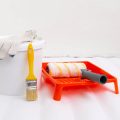1. Understanding Siding Types and Their Care
Overview of Common Siding Materials in the US
When it comes to home exteriors in America, siding is both a protective shield and a style statement. The most popular siding materials across the U.S. include vinyl, wood, fiber cement, and brick. Each material has its own unique charm and maintenance needs. Knowing how to care for your home’s siding will not only keep it looking great but also help it last for years.
Types of Siding and How to Care for Them
| Siding Type | Main Features | Care Tips |
|---|---|---|
| Vinyl Siding | Affordable, low-maintenance, available in many colors and styles. | Wash with a garden hose or pressure washer once or twice a year; check for cracks or loose panels; avoid placing grills too close to prevent warping. |
| Wood Siding | Classic look, natural material, can be painted or stained any color. | Inspect annually for rot, pests, or peeling paint; repaint or restain every 3-7 years; keep plants trimmed away from the siding. |
| Fiber Cement Siding | Durable, fire-resistant, mimics wood or masonry looks. | Rinse off dirt with a hose; check caulking at joints each season; repaint every 10-15 years as needed. |
| Brick Siding | Timeless appeal, strong, good insulation properties. | Inspect mortar joints for cracks; clean occasionally with mild detergent; remove vines to prevent moisture retention. |
Curb Appeal & Longevity Tips
No matter which siding your home has, keeping it clean and well-maintained boosts curb appeal—making your house stand out on the block. Regular inspections help you catch small problems before they grow into costly repairs. Remember: Well-cared-for siding not only looks good but also protects your investment from harsh weather all year round.
2. Inspecting and Repairing Damage
Step-by-Step Guide for Checking Your Home’s Exterior
Regular inspections are key to keeping your home’s exterior in top shape. Here’s a simple process to help you spot problems early and protect your investment:
Step 1: Walk Around the House
- Start at one corner and slowly walk around your entire home.
- Look closely at the siding, paint, trim, gutters, and foundation.
Step 2: Check for Signs of Wear
| What to Look For | Possible Issues | Recommended Action |
|---|---|---|
| Cracked or peeling paint | Water damage, wood rot | Scrape, sand, and repaint affected areas |
| Warped or loose siding panels | Moisture intrusion, structural shifting | Reattach or replace damaged panels |
| Mold or mildew spots | Poor drainage, excess moisture | Clean with a mild solution; check for leaks |
| Dented or rusted metal siding/trim | Corrosion, impact damage | Sand out rust and repaint; replace if needed |
| Gaps around windows/doors | Pest entry, air leaks | Seal gaps with caulk or weatherstripping |
| Nesting insects or chewed wood | Pest infestation (termites, carpenter ants) | Treat with pesticide or call pest control pro |
| Sagging gutters or downspouts | Poor drainage, water damage risk | Reattach securely and clear blockages |
| Foundation cracks wider than 1/8 inch | Structural settling, water penetration | Monitor small cracks; call a pro for wide/deep cracks |
Step 3: DIY Fixes vs. Professional Help
| If You See This… | You Can DIY If… | Call a Pro If… |
|---|---|---|
| Tiny paint chips or hairline cracks in siding/paint | You have basic tools and can safely reach the area | The damage covers large areas or is high off the ground |
| Mold/mildew on siding | You can clean it off with soap and water | The mold keeps coming back or is inside walls |
| Pests like ants/wasps outside | You see only minor activity | Nests inside walls or signs of termites/carpenter ants |
| Sagging gutter sections | You can safely access them with a ladder | The gutters are very high up or badly damaged |
Step 4: Keep Records and Plan Ahead
- Take photos of any issues you find for reference.
- Keep a checklist of repairs completed and schedule seasonal follow-ups.
Pro Tip:
If youre ever unsure about the severity of exterior damage—especially when it comes to structural concerns or major pest infestations—its always safer (and often cheaper in the long run) to consult with a local professional contractor.

3. Exterior Painting Best Practices
Choosing the Right Paint for Your Climate
Picking the right exterior paint isn’t just about color—it’s about protection. Weather in the U.S. can vary dramatically from region to region, so choose a paint formulated for your local climate. Here’s a quick guide:
| Region | Recommended Paint Type | Key Features |
|---|---|---|
| Northeast (Cold, snowy winters) | Acrylic latex | Flexible, resists cracking and peeling, withstands freeze-thaw cycles |
| Southeast (Hot, humid summers) | Mildew-resistant latex | Moisture resistance, prevents mold/mildew growth |
| West Coast (Mild, rainy) | Acrylic or elastomeric paint | Waterproof, resists fading from sun exposure |
| Southwest (Hot, dry, sunny) | UV-resistant acrylic | Resists sun bleaching and heat damage |
Prepping Surfaces for a Lasting Finish
Proper prep work is key to making your exterior paint job last:
- Clean thoroughly: Remove dirt, mildew, and old flaking paint with a pressure washer or scrub brush.
- Repair and patch: Fill holes and cracks with exterior filler. Replace rotted wood or damaged siding.
- Sand smooth: Sand rough spots and feather edges around scraped areas.
- Prime bare surfaces: Use a high-quality primer on new wood, patched areas, or where old paint is removed down to bare material.
Popular Color Trends in American Neighborhoods
Curb appeal matters! While every neighborhood has its own vibe, here are some popular choices across the country:
| Style of Home | Main Color Trends | Accent Colors (Doors/Trim) |
|---|---|---|
| Cape Cod / Colonial | Navy blue, crisp white, light gray | Burgundy red, black, dark green |
| Craftsman / Bungalow | Sage green, taupe, earthy brown | Tangerine orange, deep plum, olive green |
| Modern / Contemporary | Charcoal gray, cool white, slate blue | Lime green, bold yellow, rich teal |
| Ranch / Suburban Traditional | Pale yellow, beige, warm tan | Navy blue, forest green, brick red |
Painters’ Tips for Long-Lasting Results and Curb Appeal
- Avoid painting in extreme weather: Paint when temperatures are between 50–85°F (10–30°C) and avoid humid or rainy days.
- Apply two coats: Two thin coats offer better coverage and durability than one thick coat.
- Use quality brushes and rollers: They help achieve smoother finishes and reduce streaks.
- Painters tape is your friend: Use it to protect windows and trim for neat lines.
- Pace yourself: Work in sections—don’t rush. Quality takes time!
Your home’s exterior paint is more than just a color—it’s a shield against the elements and a boost to your home’s value. Taking these steps will help keep your house looking fresh year after year!
4. Weatherproofing for Every Season
Sealing Gaps and Cracks
One of the most important steps in weatherproofing your homes exterior is sealing gaps and cracks. These small openings around windows, doors, siding joints, and foundation can let in drafts, moisture, and even pests. Use high-quality caulk or expanding foam to fill any visible gaps. For larger cracks, consider weatherstripping or specialized sealants designed for exterior use.
Common Areas to Check for Gaps
| Location | Recommended Sealant Type | How Often to Inspect |
|---|---|---|
| Windows & Door Frames | Silicone Caulk | Every Spring & Fall |
| Siding Joints | Acrylic Latex Caulk | Annually |
| Foundation Cracks | Expanding Foam/Concrete Sealant | Twice a Year |
| Roof Flashings | Roofing Cement | After Severe Weather |
Adding Insulation for Energy Efficiency
The right insulation not only keeps your home comfortable but also reduces energy bills by minimizing heat loss in winter and heat gain in summer. Focus on areas like attics, exterior walls, and crawl spaces. In cold climates, consider adding extra insulation to prevent frozen pipes and keep interiors warm. In warmer regions, reflective insulation or radiant barriers can help keep your home cooler.
Insulation Tips by Region
| Climate Zone | Main Concern | Best Insulation Type |
|---|---|---|
| Northern US (Cold) | Heat Retention | Fiberglass Batts, Spray Foam |
| Southeastern US (Humid/Hot) | Moisture Control & Cooling | Foam Board, Radiant Barrier |
| Western US (Variable) | Battling Temperature Swings | Cellulose, Blown-In Insulation |
Gutter Maintenance: Keeping Water Away from Your Home
Your gutters play a key role in protecting your siding and foundation by channeling water away from your house. Clogged or damaged gutters can lead to water damage, wood rot, and even basement flooding. Clean your gutters at least twice a year—especially after spring pollen and fall leaves—and check downspouts to make sure theyre directing water far enough from the foundation.
Seasonal Gutter Checklist
| Task | When to Do It |
|---|---|
| Remove Leaves & Debris | Spring & Fall |
| Check for Leaks & Rust Spots | After Heavy Storms |
| Tighten Hangers & Brackets | Annually |
| Add Gutter Guards (if needed) | Anytime |
Tackling Weather Challenges Across the US
The U.S. climate is incredibly diverse—from freezing northern winters to humid southern summers and dry western winds. Here are some proven weatherproofing strategies tailored to different seasons:
Winter Prep (Snowy Regions)
- Add extra insulation in attics and around pipes.
- Seal drafts around doors and windows.
- Install storm windows if possible.
Spring Showers (Wet Regions)
- Clean gutters and downspouts thoroughly.
- Add splash blocks or extenders to direct water away from the foundation.
- Inspect siding for any water damage or mold.
Summer Heat & Humidity (Southern States)
- Add sun-blocking window treatments or awnings.
- Use caulk rated for high temperatures around windows and siding joints.
- Add attic fans or ventilation to reduce indoor heat buildup.
Autumn Leaves (Everywhere!)
- Clear debris from roof valleys and gutters regularly.
- Tighten up weatherstripping before cold sets in.
No matter where you live, regular weatherproofing helps protect your home’s exterior, saves money on utilities, and keeps your family comfortable through every season.
5. Routine Maintenance Checklist
Keeping your homes exterior in top shape means following a regular maintenance schedule that addresses the unique needs of American homes. Use this seasonal checklist to help you remember key tasks like power washing, caulking, and landscaping. Staying ahead with these chores not only preserves curb appeal but also protects your investment from weather-related damage.
Spring
| Task | Description |
|---|---|
| Power Wash Siding | Remove dirt, pollen, and mildew buildup from siding surfaces to prevent staining and deterioration. |
| Inspect Paint & Touch Up | Check for peeling or chipped paint on trim and siding; touch up as needed to prevent moisture intrusion. |
| Check Caulking & Seals | Look for gaps or cracks around windows, doors, and joints; reapply exterior-grade caulk where necessary. |
| Clean Gutters & Downspouts | Clear out leaves and debris to ensure proper water drainage away from your foundation. |
| Trim Landscaping | Prune trees and shrubs away from siding and roof to reduce moisture and pest risks. |
Summer
| Task | Description |
|---|---|
| Inspect for Pests | Check for signs of termites or carpenter ants near siding and eaves; address infestations quickly. |
| Repaint Faded Areas | If sun exposure has caused fading, spot-paint to keep surfaces protected and looking fresh. |
| Wash Windows & Screens | Clean exterior glass and screens to enhance views and maintain home appearance. |
| Irrigation Check-Up | Ensure sprinklers are not spraying directly onto siding or foundation, which can cause moisture issues. |
| Deck & Porch Care | Sweep, wash, and check for loose boards or nails on decks and porches. |
Fall
| Task | Description |
|---|---|
| Final Power Wash (Optional) | A quick wash can remove summer grime before winter sets in. |
| Seal Cracks & Gaps Again | Patching up caulk or weatherstripping helps keep cold air and moisture out during winter months. |
| Leaf Removal & Gutter Cleaning | Keep gutters free of fall leaves to avoid clogs and ice dams later on. |
| Lawn & Garden Prep | Mow, edge, and mulch beds; trim back any overgrown plants before the first frost. |
Winter Prep (Late Fall/Early Winter)
| Task | Description |
|---|---|
| Check Siding for Damage | Look for cracks or warping that could let in cold air or water; schedule repairs if needed. |
| Add Weatherproofing | Add storm windows/doors or apply protective films as needed for extra insulation. |
| Exterior Faucet Shutoff | Turn off outdoor water lines and drain hoses to prevent freezing and burst pipes. |
Helpful Tips for Year-Round Success:
- Create calendar reminders for each season’s tasks so nothing gets missed.
- If hiring pros for power washing or painting, book early—these services fill up fast in peak seasons.
- Tackle projects when weather permits—dry days are best for paint touch-ups or sealing work.

